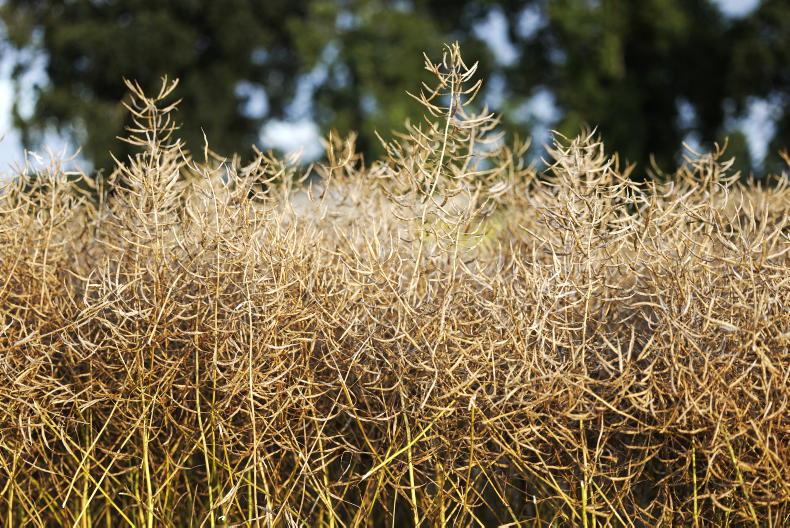Weather
The weather in the coming days looks showery and there is a risk of frost. Many sprayers were out in recent days or will be out in the coming days, so make sure the anti-freeze is back in if that frost does come to pass.
Next week looks relatively dry so far, so there may be an opportunity to catch up on some work.
Oilseed rape
Some oilseed rape growers will be applying herbicides around now. Astrokerb can be used in frosty conditions and needs moisture for residual activity, but you should not apply if there is a risk of runoff from the soil.
The label says that “best results are achieved when growth of weeds (especially blackgrass and volunteer cereals) is slow, but transpiration continues”. Transpiration is when the water moves through the plant.
You should be keeping an eye out for light leaf spot in crops. In the current conditions it might be appropriate to spray a fungicide to prevent the disease.
You can check for light leaf spot by taking about 20 leaf samples, placing them in a plastic bag and putting them in a room with a temperature of 5-10°C for about three or four days. You should be able to see the spores on the leaves if the disease is present.
If it isn’t present, it may still be worth a preventative fungicide. Light leaf spot can have a big impact on yield, so an application of Proline or Prosaro could save a lot on yield.
A fungicide product containing metconazole (Librax) or tebuconazole (Prosaro) may have some growth regulation effect, so could be applied to very forward crops, but may not be as effective in colder weather.
Aphicides
As the weather remains relatively mild, some people will be considering a second aphicide application. However, frost in recent days should help to cut aphid numbers. Make sure you are in compliance with product labels on the rates applied.
Aphicides can also kill beneficial insects, so weigh up the threat when applying. Late-sown crops are at a lower risk from aphids, but if conditions continue to be mild, crops recently emerged may benefit from an aphicide at the two-to three-leaf stage.
Costs and returns
This week Teagasc brought out its Outlook 2025 report. In that report, economist Fiona Thorne reported that there was a €200/ha increase in net margin on tillage farms, but only 56% of tillage farms earned a positive net margin in 2024.
The average net margin on farms was -€10/ha but the range was -€715/ha to +€575/ha. In 2025, Fiona predicts a 5% decline in fertiliser costs, a 2% increase in crop protection costs and an average net margin of €200/ha on tillage farms.
Given those figures, it is essential that all farmers do their costs and returns estimates, look at land rental prices and look for opportunities for premium crops to increase their profits. This time of year is ideal for this job ahead of the planting season.










SHARING OPTIONS